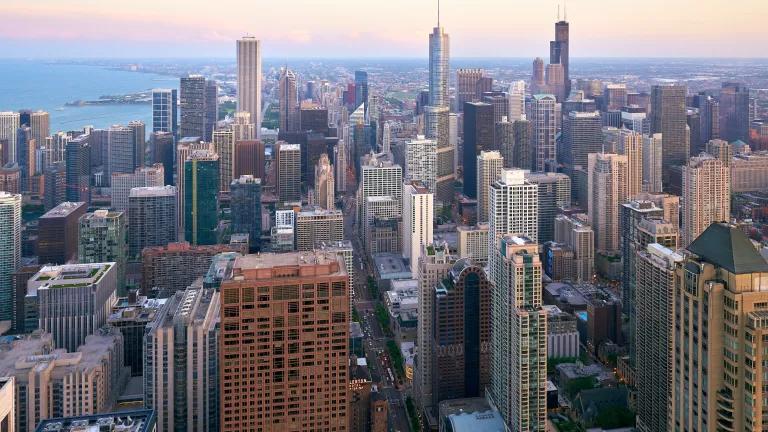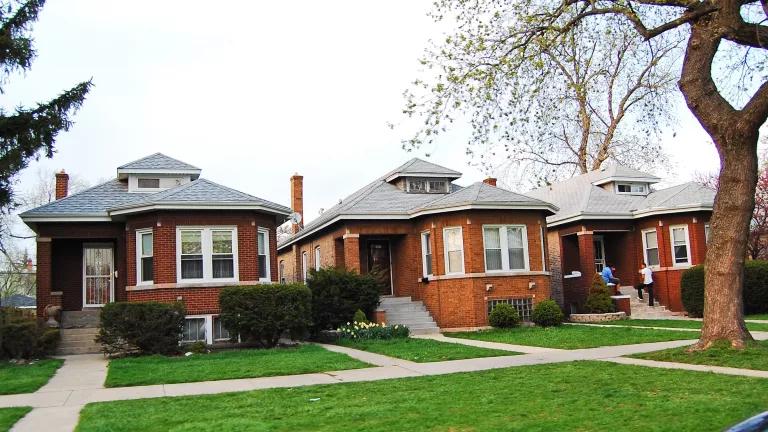The Sheraton Chicago Hotel & Towers: Greening Chicago's Skyline With Committed Owners, Innovative Technology and Two Very Smart Guys in the Basement
In June, NRDC’s Midwest Program joined the City of Chicago in announcing the Commercial Buildings Initiative (CBI) – a component of Retrofit Chicago that aims to dramatically reduce the energy needs of Chicago’s commercial buildings. With the Mayor’s leadership, the owners of fourteen major commercial buildings, with a combined 14 million square feet of space, stood up that day and committed to cutting their energy needs by 20% over the next five years through energy efficiency improvements. This will save the buildings money on their electric bills, put Illinoisans to work making building improvements, and reduce harmful pollution caused by generating electricity.
Each building is now working to decide out how to meet that goal, and coming up with strategies and technologies that can pave the way for others. I’ll be checking in with each of the CBI partners over the coming months to highlight their progress and spread the word about the energy saving tools they’re using to make their buildings more sustainable and profitable.
First stop-- The Sheraton Chicago Hotel & Towers. I met up with Ryan Egan and Jim Fitzmaurice – who serve as the building Chief Engineer and Assistant Chief Engineer, and whose pagers never stop beeping as they hustle through the hotel making sure everything works just right.
Ryan and Jim have been working with a company called Telkonet to install motion sensing thermostats in every single one of the 1214 rooms in the hotel. It’s a simple concept, but it is making a huge energy savings impact at the hotel. Rather than keeping all of the rooms at a comfortable 72 degrees at all times, why not just heat and cool the rooms that are occupied? This simple change will lower the hotel’s electric bills by more than $150,000 per year.
Here’s how it works. If a room isn’t even reserved for the day, the system allows the room to go on “deep setback.” Once a guest checks in, the thermostat automatically resets and the room is comfortable by the time the guest reaches it. When a guest leaves the room for a meeting or sightseeing, the temperature will be allowed to drift just to the point that it could be brought back to that ideal temperature within 15 minutes. The system is automatically notified when you check out of the room, so that it can go back into deep setback.
“It seems so simple, but it’s an enormous improvement in our ability to manage our energy use and costs,” said Egan.
To make this improvement, a team of roughly ten workers were employed for nearly a month, alongside the building engineers and the team from Telkonet. The Sheraton was eligible for a rebate offered through the “ComEd Smart Ideas for your Business” program, which contributes to the short payback for the capital investment. This program is part of a statewide policy initiative to make the state more efficient. The system will pay for itself in 2.5 years, after which time the $150,000 savings can be used as the owners see fit – maybe to improve the building’s bottom line or to make additional hotel improvements that will enhance the guest experience.
Oh, right, and what about the environment? Is this an improvement that will make a real difference? Each of the 1219 hotel rooms will save 5 kwh per day, which means the hotel will save 2.4 million kwh per year. This one measure installed at this one hotel can reduce carbon pollution by about 2,000 tons per year – the equivalent of taking 436 cars off the road.
Stay tuned for more tales of progress as the Chicago Commercial Building Initiative moves forward.


